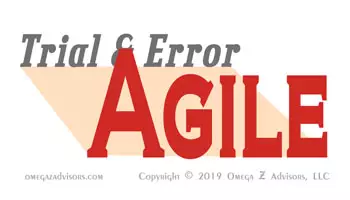Understanding Agile As A Non-Technical Way To Drive Everyday Success
Agile is all the buzz in information technology. Yet, understanding Agile in a non-technical way can drive everyday success in any field for any business.
That’s because the only thing really new about Agile is its packaging and organization. Its core has existed for millennia. We know it as trial and error. To others it’s the creative process.
Understanding Agile Means You Know More Than You Think
Yes, organization has value. After all, the Romans conquered western civilization by organizing its armies, cities and governing better. Packaging has value too.
Yes too, Agile’s professionals have staked out their territory with its own jargon. “Backlog,” “sprint,” “promise,” “scrum” and “stand-up” are but a few.
Yet, as with any set of terms experts create, they not only seek to streamline communication and processes. They also seek to identify and exclude outsiders. The jargon tells them who’s a member of the club.
Therefore, don’t be intimidated. You know more than you think about Agile.
Understanding Agile Means Expanding How You See Trial And Error

Agile is trial and error in small steps organized across many people.
Trial and error is the oldest problem solving method we know. We don’t think much about it because 1950’s industry left us grand-scale planning. Analyze a problem. Figure a solution. Make a plan. Then, work the plan.
This works if things won’t change and we’re certain of the solution. If not, then it’s not. The accelerated pace of business today severely challenges old-style planning.
Still, it’s easy to see trial and error as just trying something. If it works, we’re done. If it doesn’t, we try something else. This is what we need to see differently.
For example, take a client who hired a website developer to build a site. He got some ideas from the client. He built the site. They hated it. They paid him half and told him to get lost. Then they tried someone else.
Now, imagine if the developer did a little work and then got feedback from the client. Then, he built on what they liked and scrapped what they didn’t. Then, he repeated this – doing a little work, getting feedback – until he finished. That’s Agile.
In short, Agile is trial and error in small steps organized across many people. Keep what works. Toss what doesn’t. Understanding Agile means expanding how we see trial and error.
Why Non-Technical Agile Can Drive Everyday Success
Seeing Agile as scaled, organized trial and error or creative process can drive everyday success in an accelerated marketplace. It takes too long to produce a soup-to-nuts plan and then do it.
Sometimes, we need to dive right in. See what works. See what doesn’t. All the time, we’re taking small steps, not huge leaps. In short, Agile works on any non-technical problem. Understanding Agile as trial and error works better to show us how.



interesting perspective….
You can also ready an article posted by me on change management in procurement organizations.
http://www.xcellencematters.com
Thank you for the reference. I liked the post. ~Mike